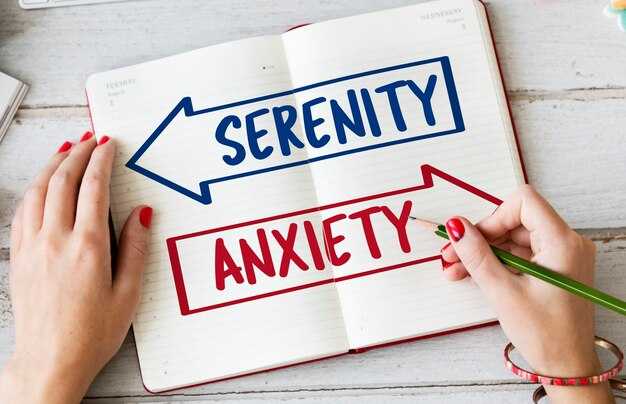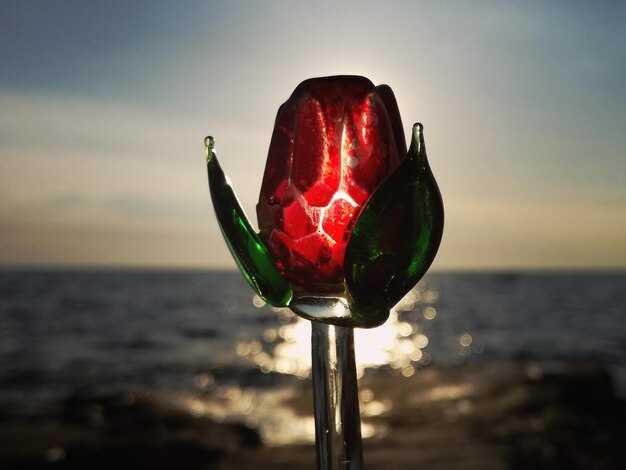When someone you care about begins to pull away, your first instinct is often to read that distance as rejection. You start to doubt yourself — maybe you feel too much or not enough. Their silence becomes a statement. The space between you feels like proof that you were never truly loved. But what if that retreat, that sudden emotional shutting down, is not rejection at all? What if fear is the language in which care is being expressed? What if the change you notice is an avoidant person’s way of saying, “This matters to me, and I don’t know how to handle it”? People who have an avoidant attachment style are often misread when intimacy grows. Others see calm, sudden coldness, or a muted response and assume indifference. Below that composed surface, though, there is often a storm of conflicting feelings. Their avoidance flattens expression, but it doesn’t erase depth — sometimes the emotions are deeper than they can admit even to themselves. When those feelings swell beyond what they can contain, they don’t lean in; they step back. Not because the care is gone, but because the care feels overwhelming and dangerous.
It’s easy to believe they’ve changed. One week they seem open, laughing, sharing little details and allowing you glimpses of themselves no one else sees; then almost overnight they shift. Messages slow, calls shorten, warmth fades into a cool politeness that leaves you re-reading conversations for clues and wondering where you went wrong. Often, nothing external has changed; you have simply touched a place in them that hasn’t felt safe for a very long time. That nearness wakes old fears — of losing control, of needing someone, of depending and then being hurt. Their love may be what triggers all those buried anxieties.
To make sense of this, consider how someone with an avoidant pattern learned to survive emotionally. In their early experience, love wasn’t a refuge — it was unpredictable, inconsistent, sometimes painful. They taught themselves to soothe independently, to shut down when needs arose, and to rely on themselves alone. They built a world where needing others equaled vulnerability, and vulnerability equaled pain. Those survival strategies don’t simply vanish when they meet a kind person. In fact, kindness can feel most threatening of all, because it asks them to feel. Years of self-protection have wired their nervous system to interpret growing intimacy as risk. Something inside whispers: “This is dangerous.” They don’t vocalize it, but their body reacts. They retreat, not because they don’t want love, but because they don’t know how to stay safe while being loved. Their instinct is to slip back into the familiar isolation that once shielded them. You may see withdrawal as rejection; for them, it is self-preservation — the mechanism they use to manage feelings that terrify them.
Imagine their experience: being drawn to you and simultaneously afraid of you. You embody warmth, security, and connection, but you also represent the potential loss of those very things. Every intimate moment is both a gift and a threat. So they pull away — not to push you out, but to quiet the chaos inside. For them, silence is a way to breathe. It can look like abandonment, and this is the tragedy of avoidant attachment: love ends up appearing as refusal. You offer your heart and they go quiet, yet inside they are torn between wanting closeness and fearing to be consumed by it. They may love you deeply but cannot tolerate the vulnerability that love requires. A primitive voice in them warns, “If I open too much I will disappear; if I need them I will be dependent; if I depend I will be hurt,” so they keep half of themselves inside, half outside, loving at a guarded distance.
It’s crucial to recognize that their withdrawal often signals just how much they care. The more the bond deepens, the stronger the urge to recoil becomes; they need time to organize their feelings, to be sure they can handle them without collapsing the walls that kept them safe. It’s an emotional reflex, a defense built over years. Until they feel secure enough not to lose themselves in connection, that reflex will keep firing. The mistake we commonly make is taking it personally — assuming that if someone loves us they wouldn’t step back. For the avoidant person, love and fear coexist. They move away precisely because they love you; that love terrifies them. If they didn’t care, they would simply remain distant without this internal battle. Hesitation, silence, and retreat are evidence of the struggle: they are trying to love without being swallowed, to stay close without feeling trapped. They feel intensely and are unsure how to process it.
Once you understand this, your perspective shifts. You stop chasing their presence and begin to see their absence as what it is: a coping strategy, not a verdict on your worth. You stop assuming that the space between you means you are unworthy. You recognize their silence as an attempt to breathe amid feelings too big for them. That doesn’t make the hurt vanish, but it helps you not take it as an attack. You learn that love doesn’t always look like closeness; sometimes it looks like fear struggling to be heard. This is why moments of regression in avoidant relationships are so bewildering: they often happen when things are finally getting real. The deeper the connection, the louder their alarm sounds. If you listen carefully beneath their quiet, you can sometimes hear the soft panic of someone who’s found what they want and is terrified of losing themselves in it.
When a shift occurs, remember it isn’t always a sign the relationship is ending. Sometimes it marks the beginning of a confrontation with their fears. Their need for space is not rejection; it’s them fighting an internal battle. They aren’t pushing you away; they’re trying not to drown in emotions they were never taught to navigate. If you can see that, and you pause before assuming the worst, you’ll come to realize the change is not automatically a loss. It’s love tangled with fear, asking for patience instead of punishment. Inside an avoidant heart, two powerful currents rage: one desperate to be loved and accepted without condition, the other terrified of it. That conflict reaches deep into the nervous system shaped by years of learning that closeness equals danger. When love begins to bloom, it does more than comfort — it wakes all the hidden fears of abandonment, control, and disappearance. The paradox repeats: what they want most is also what they fear most.
They spent years teaching themselves not to need anyone; independence became their shield, emotional control their weapon. They believed if they didn’t depend, they couldn’t be disappointed. So when a real connection forms, a quiet alarm starts inside: “If I let this person in, they will see how fragile I am and leave, as always.” That voice doesn’t speak logically; it speaks from experience — a life where love felt like exposure rather than shelter. This internal war exhausts them. One part wants to send a message, stay, and open up; the other wants to withdraw, hide, and feel safe behind emotional walls. It’s a constant push and pull. They long for closeness, but as soon as they feel it, panic sets in and manifests as distance, coolness, or seeming indifference. They aren’t devoid of feeling; they feel too much and lack the tools to manage it.
Consider someone standing near a fire: it’s warm and inviting, but the closer they get the more they risk being burned. They want heat but have learned to associate it with pain, so they step back, convincing themselves the cold is safer. That’s avoidant love: every intimate moment is gift and threat. They recognize their behavior — many avoidants are aware they’re pushing away something good — and that awareness increases the suffering, because they feel it slipping through their fingers yet cannot stop the reflex. It isn’t a conscious choice so much as a physiological response: “Back off, or you’ll get hurt.” You might see their actions as indifference, but inside they wrestle with guilt, longing, and shame. They want to stay. They don’t know how.
This internal struggle can last weeks or months. One day their eyes are soft, the next day distant; one minute they share something meaningful, the next they go quiet. It isn’t manipulation; it’s fear of attempting love. Every small step toward you seems like risk, every exchange of intimacy tests whether they can handle emotional intensity without losing themselves. Sometimes the pressure becomes too great and the shift happens: their responses slow, their tone cools, they ask for space, say they’re busy, or claim exhaustion. What’s actually happening is deeper: the emotional temperature of the relationship has risen beyond their comfort zone. Vulnerability, closeness, and expectation make them feel out of control. Control matters enormously to an avoidant mind, and sensing emotional pull triggers an unconscious withdrawal. It is not punishment — it’s regulation. They are trying to return their inner world to a manageable level. What looks like coldness is, for them, survival.
The trigger for this withdrawal can be as seemingly small as a deep conversation, a show of affection, or a truly intimate emotional moment. Ironically, this frequently happens right after things seem to be going well: you think you’re finally building something real, then they become quieter and less present. The warmth you felt is replaced by distance, which is confusing and painful precisely because it feels unearned. For the avoidant person, that moment of connection is the catalyst. Their body reads closeness as danger and their instinct whispers, “Pull back before it’s too late.” So they do, sometimes subtly, sometimes abruptly. Underneath the distance, though, their heart often still aches for you. Their silence is not indifference; it is their way of trying to control emotions they fear are uncontainable. They tell themselves distance will be safer, yet that distance frequently turns into loneliness. They miss you and replay moments in their head, but the thought of reconnecting terrifies them because it means facing the exact feelings they fled.
The withdrawal is not a considered rejection. They aren’t deciding you don’t matter; their nervous system is saying, “I can’t handle this much love right now.” It’s the emotional equivalent of flinching when someone moves too quickly toward you. They are protecting old, unhealed wounds. That’s why this dynamic is so painful for both partners: you feel rejected while they feel like they’re avoiding further injury. Both suffer, but for different reasons. Often, the point at which they retreat is the precise moment when they care the most. The deeper their feelings, the more intense the fear, which is why withdrawal so often happens when everything appears perfect: perfection equals exposure, exposure equals vulnerability, and vulnerability is a place they never learned to survive.
Understanding this doesn’t remove the hurt, but it changes how you interpret it. Instead of asking, “What’s wrong with me?” you wonder what’s happening inside them. You come to see that love isn’t being withdrawn; it’s being hidden behind fear. Distance doesn’t always mean goodbye — sometimes it’s a plea for safety. Holding that awareness allows you to stop reacting impulsively and start observing. Don’t chase their silence or force them to open before they’re ready. Give space out of understanding, not pride. Recognize that what looks like rejection may actually be a person confronting their deepest fears, and that your patience might slowly teach them that love doesn’t have to be terrifying. The shift is not the end of love; it can be the start of wrestling with fear. It is love meeting fear in its raw form. Even though it may seem they are leaving, what they’re really trying to do is find a way to stay without losing themselves.
If you can see through the silence and notice the fear beneath the distance, you’ll realize their retreat is not refusal but the language of someone still learning how to feel safe in love. When someone you love withdraws, your immediate reaction is to reach out — to close the gap, to prove that connection can bring them back. You text, ask questions, search for reassurance, and replay your last conversation looking for missteps. That is natural: your mind interprets withdrawal as danger, your body panics because what once seemed secure now feels uncertain. So you pursue, you message more, proclaim how much you care, how much you miss them, how you didn’t mean to hurt them, and that you are still here. But for the avoidant person, attempts to close the gap often feel like pressure. What you intend as reassurance can register as intrusion. Your urgency looks like demand; your kindness like control. They feel claustrophobic, trapped, and their instinct to withdraw grows stronger. Thus a painful loop forms: the more they pull away, the more anxious you become; the more you reach, the more they retreat. Neither side aims to harm, yet each action reinforces the other’s fear — you fear abandonment, they fear being consumed. The love between you chokes on misunderstanding.
The tragedy is that your reaction comes from care. You’re not trying to manipulate; you want connection and clarity. But the avoidant person doesn’t see your intention — only the intensity. They cannot read your pleading as “I’m scared too”; they register it as demand, which awakens the part of them that equates need with pain. That’s why people often lose themselves trying to hold on to someone avoidant. They begin walking on eggshells, constantly calculating the right thing to say, fearing they’ll push too hard. They assume love means tolerating silence and accepting distance. But love cloaked in fear does not heal — it only continues the pattern. Real insight emerges when you stop reacting from fear and start responding from awareness. Awareness changes everything: when you see the rhythm clearly you understand that love does not require a chase. It requires space for both people. It requires the recognition that distance doesn’t always mean rejection and that stillness is not always indifference. This is emotional intelligence in practice. Responding calmly when you want to panic is the action that breaks the cycle both of you fall into — the dynamic that looks like two different worlds colliding.
True love here is not relentless reassurance or endless proximity; it’s steady presence. It’s the love that says, “I see you need space, and I can hold that without falling apart.” That steadiness is unexpected by someone avoidant because it doesn’t pressure or demand; it doesn’t shame. It simply allows. Avoidant people don’t respond to words as much as to energy. They feel whether you are acting from desperation or from a place of calm. If your energy screams, “You must come back,” they retreat. If your energy says, “I’m here, I care, and I trust the space between us,” they begin to relax. Because for them love has historically been unsafe, fast, and overwhelming. When you stop chasing, you offer a model of love without fear — affection without urgency, connection without control. That is what real love looks like in this context. It’s not about fixing or convincing; it’s about providing reliability. You become the emotional anchor they never had, not by changing who they are, but by standing steady where you are. Love becomes less about pursuit and more about presence, less about intensity and more about constancy. When they see your calm endurance, something inside them starts to believe that connection doesn’t necessarily mean losing oneself.
This doesn’t mean you tolerate limitless neglect. Responding rather than reacting is about balance: caring without chasing, understanding without sacrificing your boundaries. You can hold two truths at once: “I know you are scared” and “I also deserve peace.” If you lose yourself while trying to accommodate someone else, that is not love but fear. Love disguised as fear heals nothing. So how do you respond mindfully rather than impulsively? Pause. When you feel the urge to reach out frantically, breathe. Ask yourself, “Am I acting from fear or from understanding?” If it’s fear, give it time; if it’s understanding, act with patience. Emotional maturity means not letting panic dictate your choices and staying present even when the other person is not. Ground yourself by reconnecting with your life — your routines, your body, and your purpose. When your emotional state hinges entirely on someone else’s proximity, you surrender your power. The avoidant person does not want a rescuer; they need a secure example. If you can be that steady, if you can show calm in uncertainty, you offer them an unfamiliar experience and a reason to trust connection.
Timing matters too. Sometimes the best response is to do nothing. Silence can be powerful when it comes from peace rather than punishment. Not chasing communicates: I respect your need to breathe. That message carries more weight than any hurried text because avoidant people are watching how you handle the distance. When they observe that your love remains steady and you don’t implode in their absence, it begins to rewrite their idea of what love means. Healing doesn’t come from forcing them to stay but from helping them want to stay because closeness no longer feels like suffocation. If you can see past the silence and recognize the fear beneath the distance, you’ll realize that their withdrawal isn’t rejection but a person learning to feel safe.
When an avoidant returns, it rarely looks like the dramatic apology you may imagine. They may not offer a long confession of feelings during their absence. Instead, they come back through presence — small acts, a quiet message out of nowhere, a late-night meme, a gentle question about how you are. Those tiny gestures might seem trivial, but for an avoidant they speak: “I missed you, but I don’t know how to say it.” Don’t discount this subtle language. You might expect grand emotional clarity, but for them re-engaging is enormous vulnerability. They’re testing the waters, wondering whether safety still exists between you. They’re not trying to manipulate; they’re checking if a welcome remains after the distance they created. When you respond warmly but without pressure, you teach a deep lesson: love does not require perfection. It can survive silence, mistakes, and fear. They start to learn that connection won’t vanish just because they need space, and that love can bend rather than break. Gradually they reopen, not through dramatic confessions but through steady consistency — small, careful moves from a person relearning trust.
This is when your patience is most tested. The urge to demand explanations is powerful: “Why did you disappear? Do you even care? Do you see how much that hurt?” Those questions are valid, but for an avoidant they may sound accusatory and send them back behind their walls. Instead, greet their return with calm honesty. You need not ignore your pain — acknowledge it without attack: “I’m glad to hear from you. That distance was hard for me.” That sentence holds both boundary and compassion; it is not punishment but invitation to awareness. How you handle their comeback teaches them how connection can function. If you respond with anger, you confirm their fears that closeness brings conflict. If you reply with balanced understanding, they experience something new: proximity that feels safe. Their healing doesn’t come from your love alone but from your steadiness — the ability to remain grounded while they learn to trust. That is why you shouldn’t withdraw yourself too quickly. Silence stings and uncertainty drains you, and sometimes the right choice is to leave. Relationships don’t all persist. But before you go, ask whether you are witnessing rejection or fear. They can look alike on the surface yet originate in very different places.
When it is rejection, you’ll sense the end: emotional withdrawal that isn’t punctuated by inner conflict, a genuine closing of care. But when fear is at play, you’ll notice a tug-of-war: moments of connection followed by retreat, affection broken by silence. That pattern is not cruelty but a wounded system trying to love the only way it knows. Rushing away too soon can mean leaving before healing has a chance to begin. Sometimes love asks you to remain composed through the discomfort long enough for fear to calm and truth to emerge. Patience here isn’t endless waiting or sacrificing your wellbeing; it’s giving love the opportunity to breathe past fear. Deep emotional wounds don’t disappear simply because a new person enters a life; healing is cyclical and messy, a series of approach-and-withdrawal. If you can perceive that rhythm, you’re less likely to personalize it. You learn that love isn’t being pulled away — it’s learning endurance. That understanding doesn’t make loving someone who is afraid easy. It takes enormous strength to remain with someone who fears being loved. Yet that strength refines you: it teaches how to love without controlling, how to give without losing yourself. That kind of love changes both people.
True love is not only comfort; it demands growth. It confronts the mirror relationships hold up and says, “I won’t let fear dictate how I love.” In the end, the avoidant’s journey and your own reflect each other: they fear losing themselves in closeness while you fear losing the connection itself. Both protect by different means — distance for them, clinging for you — and both stem from fear. Real love asks you to meet in the middle. For them, that means learning that closeness can coexist with freedom. For you, it means learning that space does not equal abandonment. When these realizations align, something remarkable can happen: what once divided you becomes the bridge between you. That is the deeper meaning of patience. Don’t wait blindly; see clearly. Recognize human complexity and accept that love is not always smooth or predictable. It’s wise to remember that when someone draws back, it isn’t always because they don’t care. Sometimes it’s proof that they care so deeply it frightens them. If you respond with calm rather than panic, with understanding rather than judgment, you can break a cycle that may have spanned generations.
Love doesn’t mean the absence of fear; it is the courage to face fear together. It’s not constant presence of another, but steady presence of understanding. So don’t leave someone simply because their fear looks like rejection. Don’t assume distance equals indifference. Sometimes distance is the last defense of a heart learning, at last, what real love might feel like. If you can hold onto that truth and remain whole while loving, you will have done something extraordinary: you will have shown that love isn’t control or pursuit but grace. It requires patience, the willingness to see through fear and choose to stay anyway. In the end, that quiet, unwavering belief that understanding is worth the effort — that, ultimately, is true love. It isn’t about constant warmth or endless words; it’s the calm strength to see someone’s fear and trust that understanding is worth the struggle.













